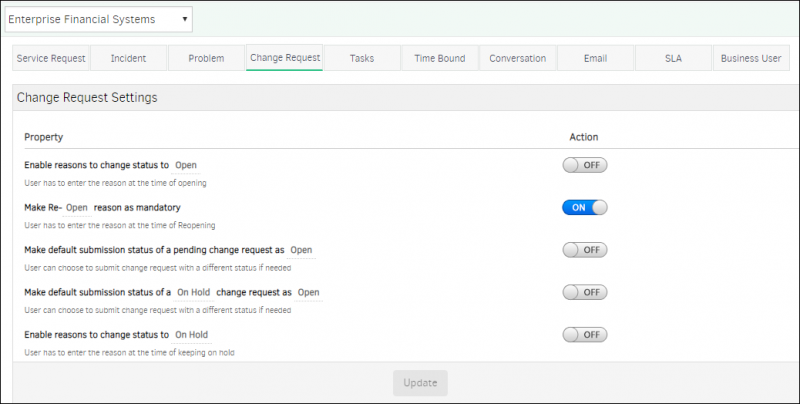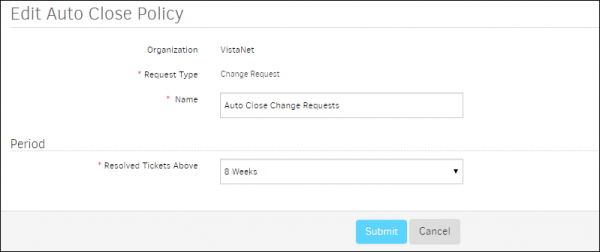Introduction
Change management helps to deploy new changes without any disruption or downtime. ITIL Change management follows a standard operating procedure to eliminate any unintended interruptions and capture necessary details about a change before it is implemented such as reason for the change, planning, and approval.
Change management works closely with Incident management, problem management, configuration management to manage infrastructure and Configuration Items(CIs) that are affected or going through the change.
Change requests typically originate from one of the following sources:
- Problem reports that identify bugs to be fixed
- System enhancement requests from end users
- Changes in underlying structure and or standards
Change assessment
Change assessment committee evaluates submitted RFC and suggests necessary changes that would be taken care by Change initiator. This is followed by Change planning that follows a standard procedure and it includes activities such as
- Prioritizing a change - After analyzing the reasons and RFC, prioritize change request and determine change type depending on the risk/impact
- Scheduling a change - Depending on the priority, scheduling is fixed.
- Decide on the planned start date and end date.
- Ensure there is no clash with other major activities that are scheduled
- Roll out plan details about implementation steps and approach
- Identifying stakeholders - Identifies the project members who are responsible for carrying out the implementation and members who need to approve
Change approval
Approval process flow is decided depending on the type of change. For example, major change requires approval from Change Approval Group and management whereas standard change does not require any Change Approval Group approval as they are pre-approved. Change request is approved only if all the Change Approval Group users approve it. Upon rejection, reassessment review is done and submitted again for approval.
Change implementation
Change Implementation includes activities such as:
- Change Plan: Once the change is approved, implementation is carried out with the help of Release management team.
- Test Plan: Release team follows their own processes that include planning and testing.
- Rollback Plan: If the change fails, plan to restore services to the previous version is carried out.

Change Request Flowchart
Configuring change request settings
Customize change details by creating custom fields in addition to the predefined fields.
To configure change request settings:
- Go to Setup > Service Desk > Settings.
- Select the Change Request tab and configure the settings.
- Click Update.

Change Request Settings
To make the settings apply to all users within the client, select Client. When NO client is selected, the chosen settings apply to all clients within the partner. Configure the Change Approval Group from User groups created for the organization.

Change Approval Group
Creating change requests
Change requests can be created using:
- Service Desk
Creating change requests on Service Desk
To create a new change request on Service Desk:
- Select Service Desk from the drop-down menu.
- Click + and click Change.
- On the New Change Request page, provide the required information.
- Click Create.

New Change Request
Supported fields
| Field name | Description |
|---|---|
| Subject | Title or short summary of Change Request |
| Description | The information required to describe Change Request scenario. This can include the actual behavior, expected behavior, and steps to reproduce the issue. |
| Attach file | The artifacts required to support Change Request. Example: error messages, screenshots, excerpt from log files. Supported file types: `.txt`, `.jpg`, `.zip`, `.docx`, `.odt`, .`odg` and `.xlsx`. File size limit: 32 MB |
| Requested By | User who requests Change |
| Assignee Group | User group that manages Change Request |
| Assign to | User who acts on Change Request |
| Resources | Devices on which the Change Request is identified |
| Category | Category to which the Change Request is mapped |
| Sub Category | Subcategory under the category to which the Change Request is mapped |
| Priority | Measure of how soon the Change Request needs to be fulfilled |
| Change Type | Normal/Emergency depending on Change Priority |
| Change Plan | Plan to execute change implementation |
| Rollback Plan | Plan to restore services to the previous version if change implementation fails |
| Test Plan | Plan to test the implemented change to ensure adherence to quality |
| Cc | Email addresses of the users who need to be copied in the email notification |
| Schedule | Planned and actual time duration of change implementation |
Creating change requests through email
To install a new email integration:
- Go to Setup > Integrations > Integrations.
- On the Available Integrations, click Email Requests.
- On Install Email Requests Integrations window, provide a name of the Integration, select the Request Type as Change, upload an Image file if required and click Install. The new email integration appears on the Email Requests Integration page.
- Click the copy icon in Incoming Email Address.
- While composing Change Request email, provide the following in the email fields:
- To: Incoming Email Address
- Subject: Change Request subject
- Email Body: Description of Change Request
- To: Incoming Email Address
Note
User can define rules to configure email attributes such as subject, description, priority, external ticket ID, and email addresses.Viewing change requests
| Tabs | Description |
|---|---|
| Conversations | Comments added by assignee or creator which can be viewed by all users in assignee group. |
| Activity Log | User activities on Change Request. |
| Resources | Resources on which the Change Request is identified. |
| Notes | Useful information or hint for Change Request resolution. Viewed by all users of assignee group. |
| To Do | Information recorded by a user for self-reference. Viewed by a single user. |
| Properties | Change Request details. |
| Status Flow | The flowchart representation that shows Change Request status change. |
| Integration Log | The inbound and outbound communication details between OpsRamp entities and third-party entities. |
Editing change requests
To edit a change request:
- Click Service Desk
- Click a Change Request. Change Request details page appears.
- Click the Edit button and edit the required fields.
To edit multiple change requests:
- Click Service Desk.
- Click the bulk update button and select the number of change requests to be edited.
- Select Apply Actions option. Update Actions window appears.
- Select the required changes and click Update.
Closing change requests
Configure auto-close policies to close change requests that are resolved and that are in inactive state since a certain elapsed time.
To add an auto-close policy:
- Go to Setup > Service Desk > Automation section > Auto Close Policies.
- Select a client and click Auto Close Change Requests.
- Provide the following:
- Name: Name of the Auto-Close policy
- Resolved Tickets Above: The inactive period of a resolved Change Request beyond which the change request needs to be closed.
- Click Submit.
